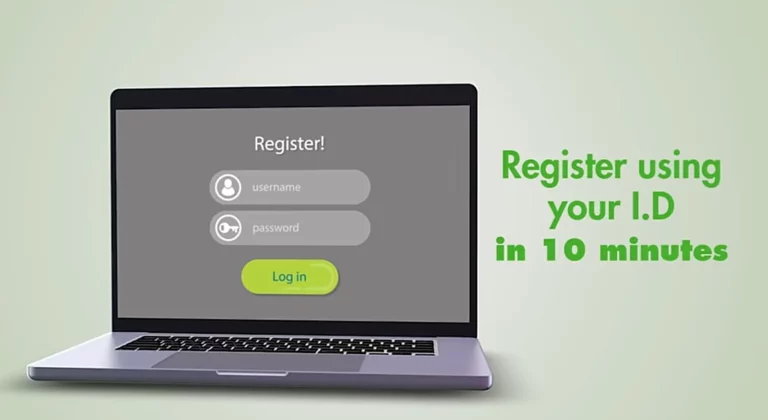Digital lending, also known as online lending or fintech lending, is a rapidly growing industry that leverages technology to streamline the borrowing process. Unlike traditional lending methods, digital lending platforms use automated systems and advanced algorithms to evaluate loan applications, assess risk, and approve or deny loans.
The digital lending process typically involves the following steps:
- Application: Borrowers fill out an online application, providing personal and financial information.
- Data Gathering: The lending platform collects data from various sources, such as credit bureaus, bank statements, and employment records.
- Risk Assessment: Advanced algorithms analyze the collected data to assess the borrower’s creditworthiness and calculate the risk of default.
- Loan Decision: Based on the risk assessment, the platform decides whether to approve or deny the loan application.
- Funding: If approved, the loan is funded through the platform’s lending partners or investors.
One of the key advantages of digital lending is speed. The entire process, from application to funding, can be completed within a few days or even hours, compared to the weeks or months it may take with traditional lenders.
Key Players in the Digital Lending Ecosystem
The digital lending ecosystem comprises various players, each contributing to the smooth functioning of the industry. Let’s explore the key players and their roles:
- Digital Lending Platforms: These are the core entities that facilitate the lending process. Examples include Lending Club, Prosper, and SoFi. They act as intermediaries, connecting borrowers with investors or lending partners.
- Borrowers: Individuals or businesses seeking loans for various purposes, such as personal loans, small business loans, or student loans, turn to digital lending platforms for quick and convenient access to credit.
- Investors: Digital lending platforms often rely on individual or institutional investors to fund the loans. These investors provide the capital in exchange for a share of the interest earned on the loans.
- Lending Partners: Some digital lending platforms partner with traditional financial institutions, such as banks or credit unions, to source funds for loans or to comply with regulatory requirements.
- Credit Bureaus: Digital lending platforms heavily rely on credit bureaus, such as Experian, Equifax, and TransUnion, to access borrowers’ credit histories and credit scores, which are crucial for risk assessment.
- Data Providers: These entities supply digital lending platforms with additional data sources, such as employment and income verification, bank account information, and alternative credit data, to enhance the risk assessment process.
- Technology Providers: Digital lending platforms utilize various technology solutions, such as cloud computing, data analytics, and machine learning, to power their operations. Technology providers offer these solutions and services.
- Regulatory Bodies: The digital lending industry is subject to various regulations and oversight from government agencies, such as the Consumer Financial Protection Bureau (CFPB) in the United States, to ensure consumer protection and fair lending practices.
Here’s a table summarizing the key players and their roles in the digital lending ecosystem:
| Player | Role |
|---|---|
| Digital Lending Platforms | Facilitate the lending process, connect borrowers and investors |
| Borrowers | Seek loans for various purposes |
| Investors | Provide capital to fund loans |
| Lending Partners | Source funds or comply with regulations |
| Credit Bureaus | Provide credit histories and scores for risk assessment |
| Data Providers | Supply additional data for enhanced risk assessment |
| Technology Providers | Offer solutions and services to power operations |
| Regulatory Bodies | Oversee the industry, ensure consumer protection and fair lending |
The digital lending ecosystem thrives on the collaboration and interdependence of these key players, enabling efficient and accessible lending services for borrowers while mitigating risks for investors and platforms.
Digital Lending Process and Workflow
The digital lending process is designed to be efficient, streamlined, and user-friendly. Let’s explore the typical workflow and steps involved:
Online Application:
- Borrowers visit the digital lending platform’s website or mobile app.
- They fill out an online application form, providing personal and financial information, such as name, address, employment details, income, and the desired loan amount.
Data Collection and Verification:
- The platform integrates with various data sources to gather additional information about the borrower.
- This may include pulling credit reports from credit bureaus, verifying employment and income through third-party providers, and accessing bank statements or other financial data.
- Advanced algorithms and data analytics techniques are used to process and analyze this data.
Risk Assessment and Underwriting:
- Based on the collected data, the platform’s risk assessment models evaluate the borrower’s creditworthiness and calculate the probability of default.
- Factors considered may include credit scores, debt-to-income ratios, employment history, and other relevant financial metrics.
- The underwriting process determines the loan terms, such as interest rates, repayment periods, and loan amounts, based on the assessed risk.
Loan Decision and Funding:
- If the borrower meets the platform’s lending criteria, the loan is approved.
- The loan decision, along with the terms and conditions, is communicated to the borrower through the platform’s interface or via email/SMS.
- Upon acceptance by the borrower, the loan is funded, either directly by the platform’s lending partners or through investors.
Loan Management and Repayment:
- Borrowers can access their loan accounts through the platform’s online portal or mobile app.
- They can view their loan details, payment schedules, and make payments electronically.
- The platform facilitates automated repayment processes, such as ACH transfers or credit card payments.
- In case of late payments or defaults, the platform may engage in collection efforts or sell the delinquent loans to third-party debt collectors.
Here’s a visual representation of the digital lending process workflow:
+----------------+
| Application |
+----------------+
|
+----------------+
| Data Collection|
| & Verification|
+----------------+
|
+----------------+
| Risk Assessment|
| & Underwriting |
+----------------+
|
+----------------+
| Loan Decision |
| & Funding |
+----------------+
|
+----------------+
| Loan Management|
| & Repayment |
+----------------+This streamlined digital lending process leverages technology to offer a seamless and efficient borrowing experience for customers while enabling lenders to manage risk effectively and scale their operations.
Benefits of Digital Lending
The rise of digital lending has brought about numerous benefits for both borrowers and lenders. Let’s explore some of the key advantages:
Increased Accessibility:
Digital lending platforms have made credit more accessible to a wider range of borrowers, including those who may have been underserved by traditional lending institutions.
By leveraging alternative data sources and advanced algorithms, these platforms can assess creditworthiness beyond traditional credit scores, opening up opportunities for individuals with limited credit histories or non-traditional income sources.
Faster and More Convenient Process:
The digital lending process is significantly faster and more convenient compared to traditional lending methods.
With online applications, automated data collection, and streamlined underwriting, borrowers can receive loan decisions and funding within a few days or even hours, rather than waiting weeks or months.
The entire process can be completed remotely, eliminating the need for physical visits to banks or lenders.
Transparency and Cost Savings:
Digital lending platforms typically offer greater transparency regarding loan terms, fees, and interest rates.
Borrowers can easily compare offers from multiple lenders and select the most favorable option.
By leveraging technology and automation, digital lenders can operate with lower overhead costs, which can translate into lower interest rates and fees for borrowers.
Personalized Lending Experience:
Digital lending platforms can provide a more personalized lending experience by tailoring loan products and terms based on individual borrower profiles and preferences.
Advanced data analytics and machine learning algorithms can identify patterns and trends, enabling lenders to offer customized solutions that better meet the needs of borrowers.
Expanded Lending Opportunities:
Digital lending has opened up new lending opportunities in various sectors, such as small business lending, student loans, real estate financing, and peer-to-peer lending.
Traditional lenders may have been hesitant to serve these markets due to perceived risks or lack of specialized expertise, but digital lenders can leverage technology to assess and manage risks more effectively.
Here’s a table summarizing the key benefits of digital lending:
| Benefit | Description |
|---|---|
| Increased Accessibility | Serving a wider range of borrowers, including those underserved by traditional lenders |
| Faster and More Convenient Process | Online applications, automated processes, and quicker funding times |
| Transparency and Cost Savings | Greater transparency in loan terms, lower overhead costs leading to lower rates/fees |
| Personalized Lending Experience | Tailored loan products and terms based on individual borrower profiles |
| Expanded Lending Opportunities | New lending opportunities in various sectors, such as small business and student loans |
While digital lending has brought about significant advantages, it’s important to note that it also presents certain challenges and risks, which will be discussed in the next section.
Challenges and Risks in Digital Lending
While digital lending offers numerous benefits, it also presents several challenges and risks that need to be addressed:
Regulatory Compliance:
The digital lending industry is subject to various regulations and oversight from government agencies, such as the Consumer Financial Protection Bureau (CFPB) in the United States.
Digital lenders must ensure compliance with fair lending laws, data privacy regulations, and consumer protection laws.
Failure to comply can lead to hefty fines, legal disputes, and damage to reputation.
Data Security and Cybersecurity Risks:
Digital lending platforms handle sensitive personal and financial data of borrowers and investors.
They must implement robust cybersecurity measures to protect against data breaches, identity theft, and cyber attacks.
Any security breach can erode consumer trust and result in legal liabilities and financial losses.
Credit Risk Management:
Effective credit risk management is crucial for digital lenders to maintain profitability and minimize losses.
While advanced algorithms and alternative data sources can improve risk assessment, there is still a possibility of miscalculating credit risks, leading to higher default rates.
Lenders must continuously refine their risk models and monitor portfolio performance to mitigate credit risks.
Operational Challenges:
Digital lending platforms rely heavily on technology infrastructure and automated processes.
Any system failures, software bugs, or integration issues can disrupt operations and negatively impact the borrower experience.
Maintaining scalability, reliability, and efficient operations as loan volumes grow can be challenging.
Competition and Market Saturation:
The digital lending market has witnessed rapid growth and increased competition from both established players and new entrants.
As the market becomes more saturated, differentiation and maintaining a competitive edge may become more challenging.
Lenders must continuously innovate, offer unique value propositions, and adapt to changing market dynamics.
Here’s a table summarizing the key challenges and risks in digital lending:
| Challenge/Risk | Description |
|---|---|
| Regulatory Compliance | Ensuring compliance with fair lending laws, data privacy regulations, and consumer protection laws |
| Data Security and Cybersecurity Risks | Protecting sensitive data from breaches, identity theft, and cyber attacks |
| Credit Risk Management | Effectively assessing and managing credit risks to minimize defaults and losses |
| Operational Challenges | Maintaining scalability, reliability, and efficient operations while relying on technology infrastructure |
| Competition and Market Saturation | Differentiating offerings and adapting to changing market dynamics in a saturated market |
To mitigate these challenges and risks, digital lenders must adopt robust risk management practices, invest in cybersecurity measures, prioritize regulatory compliance, and continuously innovate to stay competitive in the evolving digital lending landscape.
Emerging Trends and Future of Digital Lending
The digital lending industry is constantly evolving, driven by technological advancements, changing consumer preferences, and regulatory developments. Here are some of the emerging trends and possibilities for the future of digital lending:
Artificial Intelligence (AI) and Machine Learning (ML):
- Digital lenders are increasingly leveraging AI and ML to enhance various aspects of their operations.
- Predictive analytics and real-time risk modeling can improve credit risk assessment and underwriting decisions.
- Chatbots and virtual assistants powered by natural language processing (NLP) can provide personalized support and improve the borrower experience.
Alternative Data and Open Banking:
- Traditional credit data sources may not accurately reflect the creditworthiness of certain borrower segments, such as gig workers, self-employed individuals, or those with thin credit files.
- Digital lenders are exploring the use of alternative data sources, such as utility payments, rent payments, and social media data, to gain a more comprehensive understanding of borrowers’ financial situations.
- The rise of open banking initiatives, which allow lenders to access borrowers’ financial data with their consent, can further enhance the underwriting process.
Embedded Finance and Banking-as-a-Service (BaaS):
- Embedded finance refers to the integration of financial services, such as lending, into non-financial apps and platforms.
- BaaS enables non-banking entities to offer financial services through partnerships with licensed financial institutions.
- This trend opens up new opportunities for digital lenders to reach new customer segments and offer seamless lending experiences within various platforms and ecosystems.
Decentralized Finance (DeFi) and Blockchain:
- The emergence of decentralized finance (DeFi) and blockchain technology has the potential to disrupt the traditional lending landscape.
- Peer-to-peer lending platforms built on blockchain can facilitate direct lending between borrowers and lenders, eliminating intermediaries.
- Smart contracts and decentralized applications (dApps) can automate loan processes, improve transparency, and reduce costs.
Increased Regulation and Industry Consolidation:
- As the digital lending industry matures, increased regulation and oversight from government agencies are likely to shape the future landscape.
- Compliance with evolving regulations may lead to industry consolidation, as smaller players struggle to meet the compliance costs and larger players acquire or merge with others.
- However, this could also create opportunities for specialized niche players to emerge and cater to specific market segments or lending products.
Here’s a table summarizing the emerging trends and possibilities for the future of digital lending:
| Trend/Possibility | Description |
|---|---|
| AI and Machine Learning | Enhancing credit risk assessment, underwriting decisions, and borrower experience through AI/ML |
| Alternative Data and Open Banking | Leveraging alternative data sources and open banking initiatives for better risk assessment |
| Embedded Finance and BaaS | Integrating lending services into non-financial apps and platforms through partnerships |
| DeFi and Blockchain | Exploring decentralized lending platforms, smart contracts, and dApps for transparency and cost savings |
| Increased Regulation and Consolidation | Potential for increased regulation, industry consolidation, and niche players emerging |
As the digital lending industry continues to evolve, embracing these emerging trends and staying ahead of the curve will be crucial for lenders to remain competitive, enhance customer experiences, and capitalize on new growth opportunities.
Key Takeaways:
- Digital Lending is a rapidly growing industry that leverages technology to streamline the borrowing process, offering faster and more convenient access to credit.
- The digital lending ecosystem comprises various key players, including digital lending platforms, borrowers, investors, lending partners, credit bureaus, data providers, technology providers, and regulatory bodies.
- The digital lending process involves online applications, data collection and verification, risk assessment and underwriting, loan decisions and funding, and loan management and repayment.
- Key benefits of digital lending include increased accessibility, faster and more convenient processes, transparency and cost savings, personalized lending experiences, and expanded lending opportunities.
- Challenges and risks in digital lending include regulatory compliance, data security and cybersecurity risks, credit risk management, operational challenges, and competition and market saturation.
- Emerging trends and possibilities for the future of digital lending include AI and machine learning, alternative data and open banking, embedded finance and BaaS, decentralized finance (DeFi) and blockchain, and increased regulation and industry consolidation.
- To stay competitive, digital lenders must embrace emerging trends, prioritize regulatory compliance, invest in cybersecurity measures, and continuously innovate to meet evolving customer needs and market dynamics.
Read also:




